Learn about the latest tips, tutorials, upcoming events and certifications

In this blog post you'll find out the top 10 bestselling titles at SAS Global Forum 2018.
Learn about the latest tips, tutorials, upcoming events and certifications

In this blog post you'll find out the top 10 bestselling titles at SAS Global Forum 2018.
Datasets can present themselves in different ways. Identical data can bet arranged differently, often as wide or tall datasets. Generally, the tall dataset is better. Learn how to convert wide data into tall data with PROC TRANSPOSE.
Do you periodically delete unneeded global macro variables? You should! Deleting macro variables releases memory and keeps your symbol table clean. Learn how the macro language statement that deletes global macro variables and about the %DELETEALL statement that can be a life saver for macro programmers.

During SAS Global Forum 2018, I sat down with four SAS users to get their take on what makes them a SAS user. Read through to find valuable tips they shared and up your SAS game. I’m sure you will come away inspired, as you discover some universal commonalities in being a SAS user.
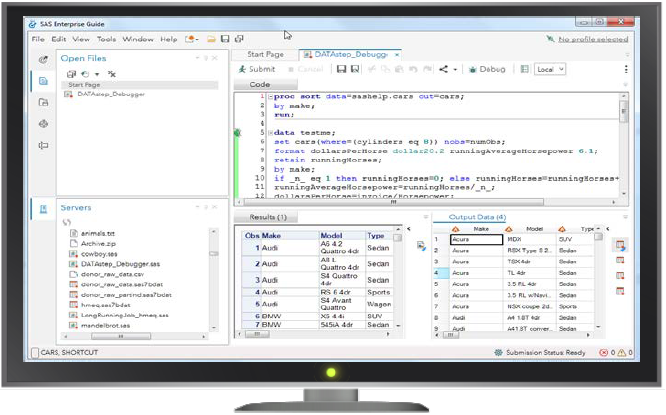
The title of this blog says what you really need to know: SAS Enterprise Guide does have a future, and it's a bright one. Ever since SAS Studio debuted in 2014, onlookers have speculated about its impact on the development of SAS Enterprise Guide. I think that we have been
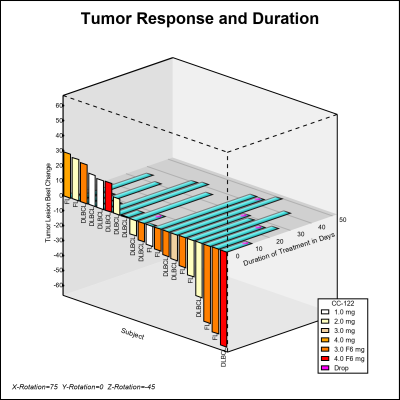
A while back a user requested to create a 3D WaterFall chart as presented by E Castanon Alvarez et. al. in "3D waterfall plots: a better graphical representation of tumor response in oncology" Annals of Oncology, Volume 28, Issue 3, 1 March 2017, Pages 454–456. I posted a blog article titled
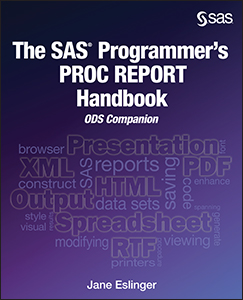
The ODS destination for PowerPoint uses table templates and style templates to display the tables, graphs, and other output produced by SAS procedures. You can customize the look of your presentation in a number of ways, including using custom style templates and images. Here we'll learn about using background images.

A SAS practice exam can help you prepare for SAS certification. Practice exams are similar in difficulty, objectives, length, and design of the actual exam. While there's no guarantee that passing the practice exam will result in passing the actual exam, they can help you determine how prepared you are for an exam.

SAS variables are variables in the statistics sense, not the computer programming sense. SAS has what many computer languages call “variables,” it just calls them “macro variables.” Knowing the difference between SAS variables and SAS macro variables will help you write more flexible and effective code.
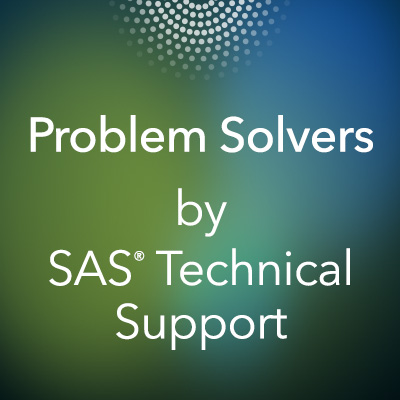
The %SYSFUNC macro function allows you to access most SAS® functions. In this blog post, I demonstrate how %SYSFUNC can help in your programming needs when a macro function might not exist. I'll also share the formatting feature that is built in to %SYSFUNC and introduce the %QSYSFUNC that masks the returned value.
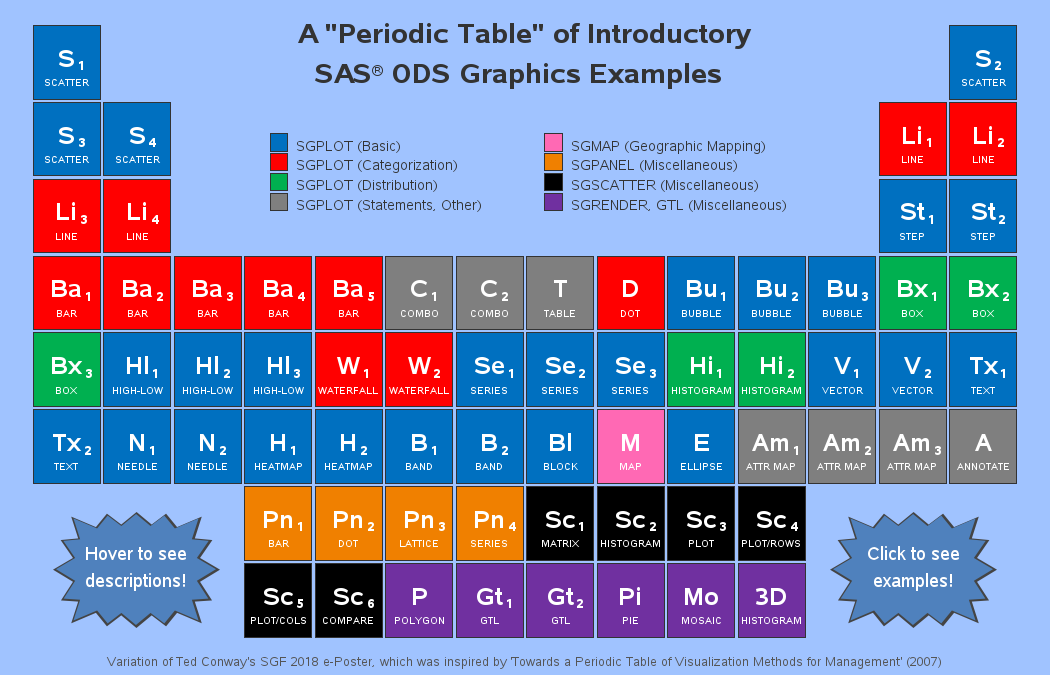
There were 97 e-posters in The Quad demo room at SAS Global Forum this year. And the one that caught my eye was Ted Conway's "Periodic Table of Introductory SAS ODS Graphics Examples." Here's a picture of Ted fielding some questions from an interested user... He created a nice/fun graphic,

올 초 미국항공우주국 나사(NASA)는 전 세계 시민 과학자(citizen scientist) 1만여명이 새로운 지구형 행성계 ‘K2-138’을 발견했다고 발표하며 천문학계를 떠들썩하게 했습니다. 대표적인 시민 과학자 플랫폼 ‘주니버스(Zooniverse)’에서 집단 지성을 모아 이뤄낸 첫 번째 쾌거입니다! 미국 캘리포니아 대학교 산타 크루즈(UCSC) 연구팀은 시민 과학자도 쉽게 데이터를 분석할 수 있는 특수 프로그램을 제작했습니다. 이를 기반으로 시민 과학자들은

Sometimes it is important to ensure that a matrix has unique rows. When the data are all numeric, there is an easy way to detect (and delete!) duplicate rows in a matrix. The main idea is to subtract one row from another. Start with the first row and subtract it

The SAS Jedi Mark Jordan presents his SAS Global Forum 2018 paper "Working with Big Data in SAS"
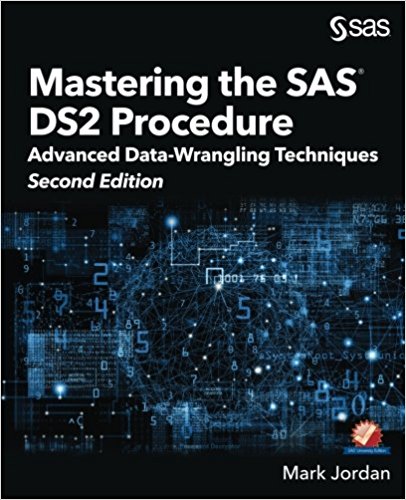
When speed is required at scale, it's hard to beat parallel processing data in memory with DS2 and SAS® Viya® with the amazing Cloud Analytic Services (CAS)!
As a general rule, when SAS programmers want to manipulate data row by row, they reach for the SAS DATA step. When the computation requires column statistics, the SQL procedure is also useful. When both row and column operations are required, the SAS/IML language is a powerful addition to a
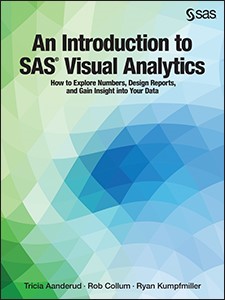
At SAS we use data to accomplish many of our everyday tasks. At SAS Books, we have now even used data to create a data-driven book, An Introduction to SAS Visual Analytics.
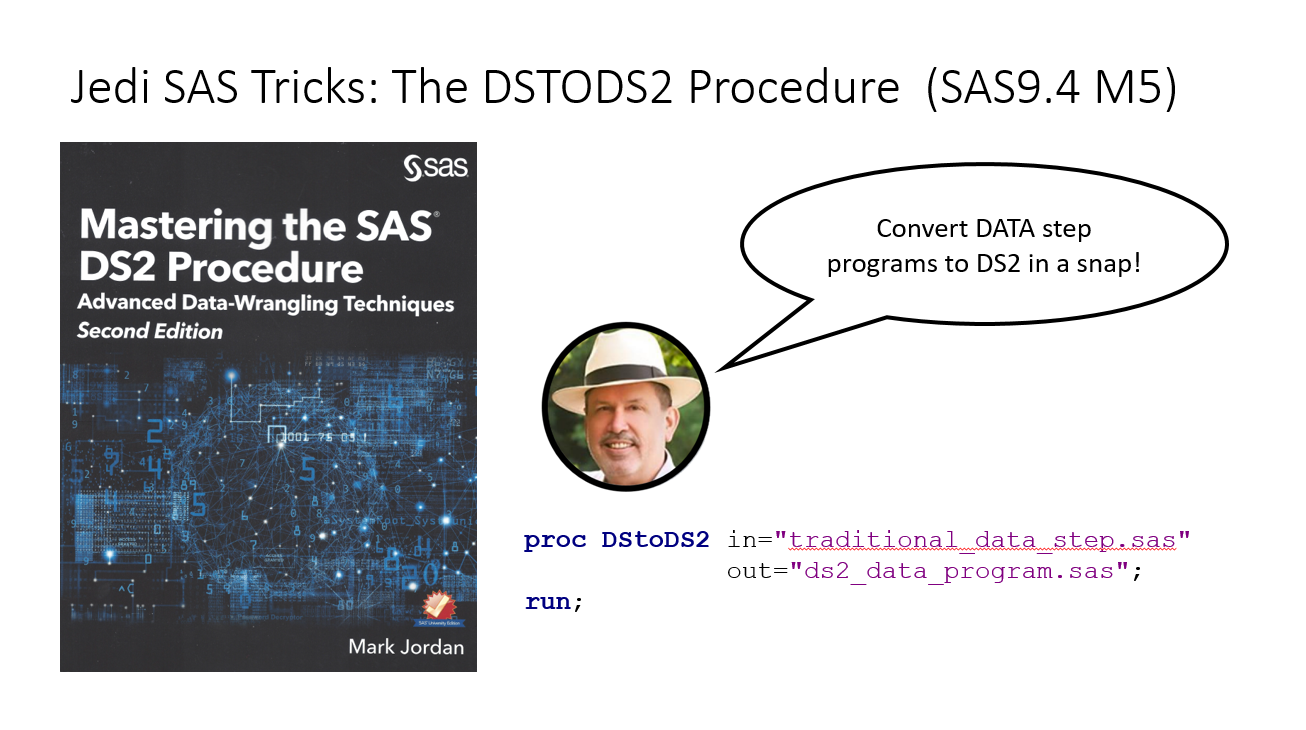
You have the infrastructure, and you know that DATA step would run so much better in DS2, but it’s complicated and you don’t know how to get started. Well, if you have SAS 9.4M5, rejoice! The DStoDS2 procedure is here, and it’s a humdinger! (No, Chris, not a Hemedinger… ;-) It's

We all have different learning styles. Some learn best by seeing and doing; others by listening to lectures in a traditional classroom; still others simply by diving in and asking questions along the way. Traditional face-to-face classroom instruction, real-time classes over the Internet, or self-paced instruction with exercises, SAS Education

In meiner Funktion als Academic Program Manager unterstütze ich Hochschulen in den Themengebieten künstliche Intelligenz (KI), Data Science und Business Analytics. Einer der am häufigsten geäußerten Wünsche ist, dass seitens SAS, Use-Cases zur Verfügung gestellt werden. Keine theoretischen Gebilde, sondern echte, reale Daten von Firmen mit einem handfesten Business-Problem, das
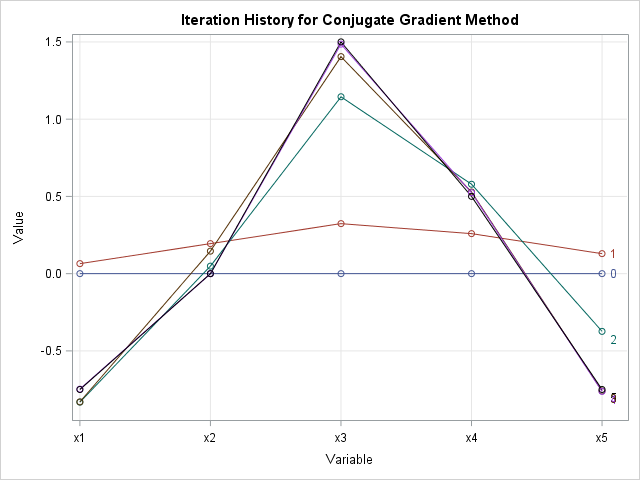
I often claim that the "natural syntax" of the SAS/IML language makes it easy to implement an algorithm or statistical formula as it appears in a textbook or journal. The other day I had an opportunity to test the truth of that statement. A SAS programmer wanted to implement the

About once a month I see a question on the SAS Support Communities that involves what I like to call "computations with combinations." A typical question asks how to find k values (from a set of p values) that maximize or minimize some function, such as "I have 5 variables,

Mathematik im Alltag, da denkt jeder sofort an die Rechnung im Restaurant, die man mal schnell per Kopfrechnen aufteilen will. Oder an Dreisatz, Prozentualrechnung, jaja … Für viele Leute kein Problem, aber irgendwie negativ besetzt. Das muss sich ändern! O. k., da wird nun kein gesetzlicher Feiertag rausspringen (wobei DAS jeden

The R SWAT package (SAS Wrapper for Analytics Transfer) enables you to upload big data into an in-memory distributed environment to manage data and create predictive models using familiar R syntax. In the SAS Viya Integration with Open Source Languages: R course, you learn the syntax and methodology required to

‘국영수코(co)’라는 신조어 들어보셨나요? 국어, 영어, 수학, 코딩(coding)의 약자인데요. 교육부의 ‘2015 개정교육과정’에 따라 올해 3월부터 중학생, 내년부터는 초등학교 5, 6학년 학생의 소프트웨어(SW) 교육이 의무화되면서 코딩 교육과 관련 자격증 열풍이 불고 있습니다. 미국, 영국 등 IT 선진국들은 이미 발 빠르게 코딩 교육을 의무화하며, 4차 산업혁명 시대의 인재 확보에 나섰는데요. SAS 역시 2014년, 학습이나 비상업적인

This article is motivated by a recent question on the SAS Communities board. This user wants to create a series or spline plot where the attributes of the line (color, thickness) can be changed based on another variable. In this case it may be a binary variable with "0" and

Goutam Chakraborty is a busy man. In addition to serving as SAS professor of marketing analytics at Oklahoma State University, Dr. Chakraborty is the director and founder of the SAS and Oklahoma State University MS in Business Analytics and an award winning author and professor. He teaches courses in such areas as business

데이터 시각화 툴을 이용해 건물 지도, 층 설계, 기타 Esri 데이터를 디스플레이해야 한다면? 여기를 주목해주세요! 최근 ‘SAS 비주얼 애널리틱스 8.2(SAS Visual Analytics 8.2)’에 추가된 사용자 정의 폴리곤(polygon) 기능으로 여러 유형의 지역 오버레이를 렌더링할 수 있습니다. 일반적으로 보고서에 층 또는 건물 지도를 포함시킬 때 많이 사용되는데요. 오늘은 SAS 비주얼 애널리틱스로 실제 폴리곤을 등록하고,

My article about the difference between CLASS variables and BY variables in SAS focused on SAS analytical procedures. However, the BY statement is also useful in the SAS DATA step where it is used to merge data sets and to analyze data at the group level. When you use the
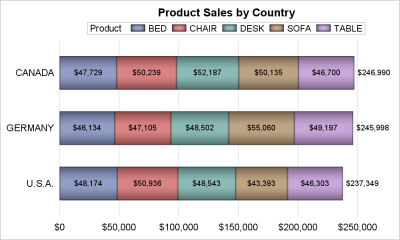
A common request on the communities page is to place data labels on horizontal bar charts. Often users want to display stacked horizontal bar charts, with the values displayed for each segment and the overall value of the bar itself as shown in the example below. In this example, the